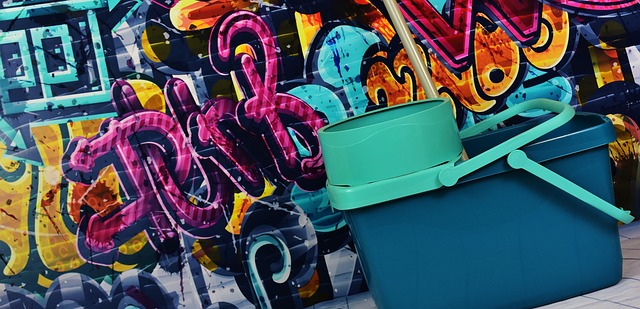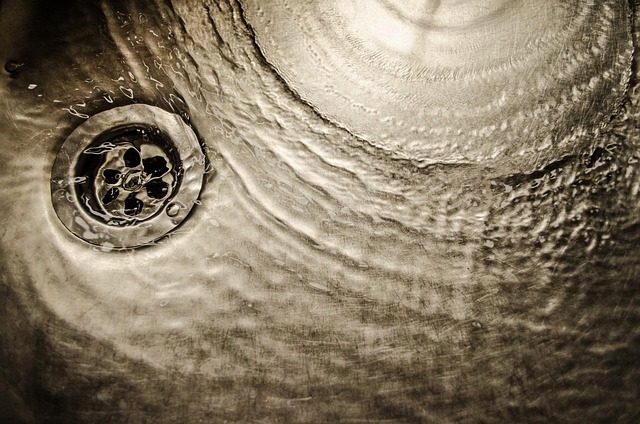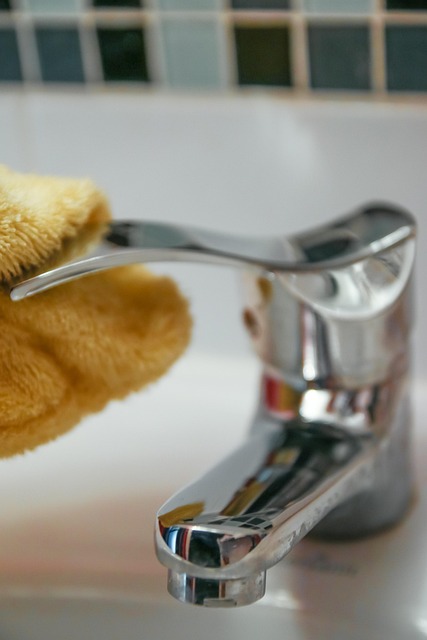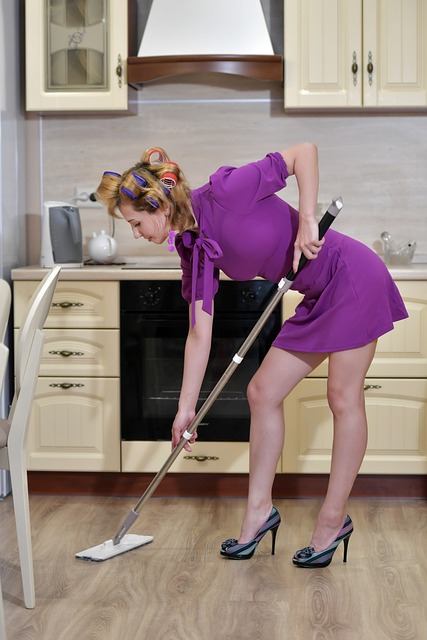Regular drain cleaning prevents bathroom issues like clogs and overflows. Use tools like pliers, hooks, drain augers, pressure washers, and chemical/natural cleaners. Natural methods, such as baking soda and vinegar, offer safer alternatives to chemicals. Prevent blockages by avoiding pouring grease, coffee grounds, or large food particles down the drain. For stubborn clogs, use power snakes or natural remedies; seek professional help if needed. Prioritize safety with PPE, proper ventilation, responsible disposal, and child/pet protection during cleaning.
Tired of dealing with slow-draining sinks and showers? Understanding common drain issues is the first step to effective bathroom drain cleaning. From hair and soap scum buildup to more stubborn clogs, knowing what you’re up against empowers you to tackle the problem head-on. Armed with the right tools and techniques, from traditional snake devices to natural cleaning solutions, you can maintain smooth drainage and prevent future blockages. Learn proven steps for cleaning a clogged drain, explore chemical vs. natural methods, discover preventive measures, and master safety precautions for hassle-free bathroom maintenance.
Understanding Common Drain Issues

Many common bathroom drain issues can be easily prevented with regular cleaning and maintenance. One of the most frequent problems is clogging, which occurs when hair, soap scum, or other debris accumulate and form a blockage. This not only slows down water drainage but can also lead to overflows, causing potential damage to your bathroom floor and walls.
Another issue is the buildup of mineral deposits, especially in areas with hard water. Over time, these deposits can create a crusty, tough layer on pipes and drains, reducing water flow efficiency. Proper drain cleaning routines, including regular use of drain cleaners or natural remedies like baking soda and vinegar, can help address and prevent these common bathroom drain issues.
Tools and Equipment for Effective Cleaning

When it comes to effective drain cleaning, the right tools and equipment can make all the difference. Start with a good set of pliers or a hook, which are essential for removing any visible debris or clogs stuck in the drain’s reach. A drain auger (or snake) is another must-have; these flexible metal cables can be inserted into the drain to break up and dislodge stubborn obstructions. For tougher blockages, a pressure washer can be employed to blast away built-up gunk.
Don’t underestimate the power of a good old-fashioned plunger either. A cup-style plunger creates a seal around the drain opening, generating sufficient suction to clear minor clogs. Additionally, having on hand a sink or shower drain cleaner—either chemical or natural—can help dissolve hair, soap scum, and other common drain offenders. Remember, proper safety gear, like gloves and eye protection, is crucial when tackling any drain-cleaning task.
Steps to Clean a Clogged Drain

Clearing a clogged drain is often a simple process, requiring just a few household items. Begin by gathering materials like baking soda, vinegar, and hot water. Pour ½ cup of baking soda down the drain to coat the insides with a mild abrasive. Then, slowly drip 1 cup of white vinegar into the drain to create a fizzy reaction; this mixture helps break down grease and grime buildup. After waiting for about 30 minutes to an hour, pour 4 cups of hot water down the drain in a steady stream to flush out any debris.
If the initial attempt doesn’t clear the clog, try using a plumbing snake or a plunger. Feed the snake into the drain and twist it to break up any obstructions. Alternatively, place the plunger over the drain opening, ensuring a tight seal, and pump up and down vigorously for several minutes until you feel resistance then release. This action helps dislodge clogs from the pipes.
Chemical vs Natural Cleaning Methods

When it comes to cleaning your bathroom drain, you have two primary options: chemical or natural methods. Chemical cleaners, while effective at clearing clogs and removing buildup, can be harmful to both your health and the environment if not used properly. They often contain strong acids or caustics that can cause skin irritation or respiratory issues when inhaled.
Natural cleaning methods, on the other hand, offer a safer and more eco-friendly alternative. Ingredients like baking soda and vinegar are popular choices for drain cleaning due to their effectiveness and minimal impact on the environment. Baking soda acts as a natural abrasive, helping to break down clogs, while vinegar’s acetic acid dissolves hair and grease buildup. These natural solutions not only keep your drains clean but also contribute to a healthier living space and a greener planet.
Preventive Measures for Regular Maintenance

Regular maintenance is key to preventing clogs and keeping your bathroom drains in top shape. Start by adopting simple habits like avoiding pouring grease, coffee grounds, or large food particles down the drain. These substances can solidify in pipes, leading to blockages. Instead, use a strainer over the drain to catch hair and other debris from everyday showers.
Additionally, consider using natural cleaning agents like baking soda and vinegar as alternatives to harsh chemicals. Pouring a mixture of these two into the drain once a week can help dissolve buildup. Remember, preventive measures are not only cost-effective but also eco-friendly and safer for your family.
Dealing with Difficult Blockages

When it comes to bathroom drain cleaning, dealing with difficult blockages can be a challenging task. If your initial attempts using conventional methods like pliers or chemical cleaners fail, it might be time to consider more advanced solutions. One effective approach is to employ a power snake, also known as a draincleaner, which is a flexible metal cable that can reach and dislodge obstructions deep within the drain pipe. These tools are versatile and powerful, making them ideal for tackling stubborn clogs caused by built-up hair, grease, or foreign objects.
Additionally, if chemical cleaners haven’t yielded results, natural remedies like baking soda and vinegar can be surprisingly effective. Pouring a mixture of these two substances down the drain can help break up blockages naturally. This eco-friendly method is not only safe for your pipes but also for the environment. Remember, when dealing with persistent issues, seeking professional assistance from plumbers equipped with specialized tools and expertise is always an option to ensure thorough and long-lasting drain cleaning solutions.
Safety Precautions During Drain Cleaning

When it comes to bathroom drain cleaning, safety should always be your top priority. Before starting any cleaning process, ensure you have all necessary personal protective equipment (PPE), including gloves, goggles, and a mask. This gear acts as a shield against harsh chemicals and potential debris, protecting your eyes, skin, and lungs. Always read and follow the instructions on cleaning products carefully to avoid accidental exposure or mishandling.
Additionally, maintain proper ventilation in the bathroom during the cleaning process. Open windows or use fans to ensure fresh air circulation, which helps dissipate fumes from chemicals and prevents the buildup of toxic gases. Never mix bleach with other household cleaners, as this can result in hazardous fumes. Keep all products out of reach of children and pets, and dispose of used materials responsibly to prevent environmental contamination.
